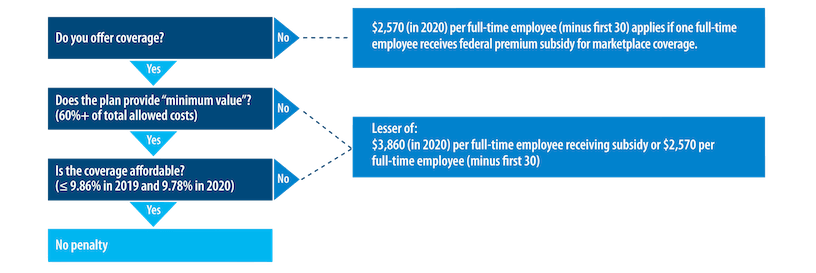The Dobbs decision will have far-reaching implications for employees seeking abortion services and the health care professionals who provide them. Employers who may offer a broad range of reproductive health benefits through their employee benefit plans will also be asking many questions about continued coverage for and access to these abortion services.
Coverage for employees can be offered in one of two types of plan designs: fully-insured and self-insured coverage. With a fully-insured plan, the state-licensed insurer bears the risk of all claims incurred under the policy.
Employers who choose to self-fund their health benefits assume the risk of and pay claims incurred by their employees. These self-funded plans are administered under contracts with third-party administrators.
Employers offering fully-insured coverage
If a state should prohibit the delivery of abortion services within its borders, any insurance company licensed by the state to issue insurance policies to employers and individuals in that state will be unable to provide coverage for abortion services within that state. Many fully-insured plans operating in states where abortion services may no longer be legal may have in-network providers in other states and/or provide coverage for out-of-network services. These fully-insured carriers could possibly continue to pay claims for abortion services provided in states where abortion remains legal. To the extent state law precludes an insurance company within the state from issuing coverage for abortion services, the insurance company would have to comply with such restrictions, since insurance is generally regulated by state law.
For employers with fully-insured plans operating in states that prohibit insurance coverage for and access to abortion services, they will need to consider other options if they wish to continue providing assistance for these services. It is recommended that employers discuss options with their benefits consultants and legal counsel.
Employers offering self-insured coverage
Employers who offer self-funded health care benefits for abortion services should be able to continue to offer this coverage to their benefits-eligible employees regardless of whether any states may ban insurance coverage for abortion services. Because self-funded plans are governed by ERISA and ERISA has pre-emption provisions that override state law that relates to an employee benefit plan, coverage for abortion services could continue.
Even though self-funded employers may continue to offer coverage for abortion services under their group health plans, access to these services for employees working or residing in states where abortion services are prohibited will be restricted. Employers whose group health plans have in-network providers in multiple states can continue to provide coverage and access to abortion services from such providers in states where abortion services are legal.
If the employer’s self-funded group health plan has out-of-network coverage, employees could seek abortion services from an out-of-network provider. Some group health plans cover out-of-network care when there is no in-network provider in a service area at the in-network benefit level.
Here are some action steps an employer should consider:
- Communicate. Communicate with your broker/benefits consultant, third-party administrator, pharmacy benefit manager, and insurance company to understand what options may be available or to ensure that the current benefits will still be applicable depending on the state in which the employer is located.
- Consider the way in which your medical benefits are funded. If feasible, employers who offer fully-insured health plans, which are subject to state law limitations on abortion services, might consider a transition to self-insured coverage. This would warrant discussion with the broker/benefits consultant to make sure this is the right strategy.
- Review provider network access. If your group health plan has a limited provider network, i.e., an HMO or EPO, you may want to consider expanding in-network coverage or perhaps adding an out-of-network benefit that might give employees access to covered abortion services in states where such services remain available.
- Establish a Health Reimbursement Arrangement for abortion services. Taking great care to implement a health reimbursement arrangement (HRA) ensuring that it complies with the Affordable Care Act, ERISA, HIPAA, COBRA, and related regulatory guidance, employers, whether offering fully-insured or self-insured major medical coverage, can consider establishing an HRA that covers any unreimbursed expenses for medical care, as defined in Code section 213(d). The HRA would either need to be integrated with the employer’s medical plan or it would have to be structured as an Excepted Benefit HRA (EBHRA).
- Review. Review any group health plan documentation and other employee communications to ensure they align with whatever changes in benefits will result from the Dobbs decision.
Employers must be aware that ERISA requires that plan documentation reflect the benefits available to plan participants. Because benefits may change as a result of Dobbs, employers should ensure that they provide proper notice of any changes to reproductive health benefits under their group health plans.
Employee communications should be prepared to clearly explain in plain language how coverage for abortion services may change and if continued to be offered, how employees can continue to access them.
Employees may have a lot of questions about their access to abortion services. In addition to any company communications, the employer should be prepared to tell employees about the details of coverage and access to abortion services benefits. Please contact our office if you have further questions or concerns.

